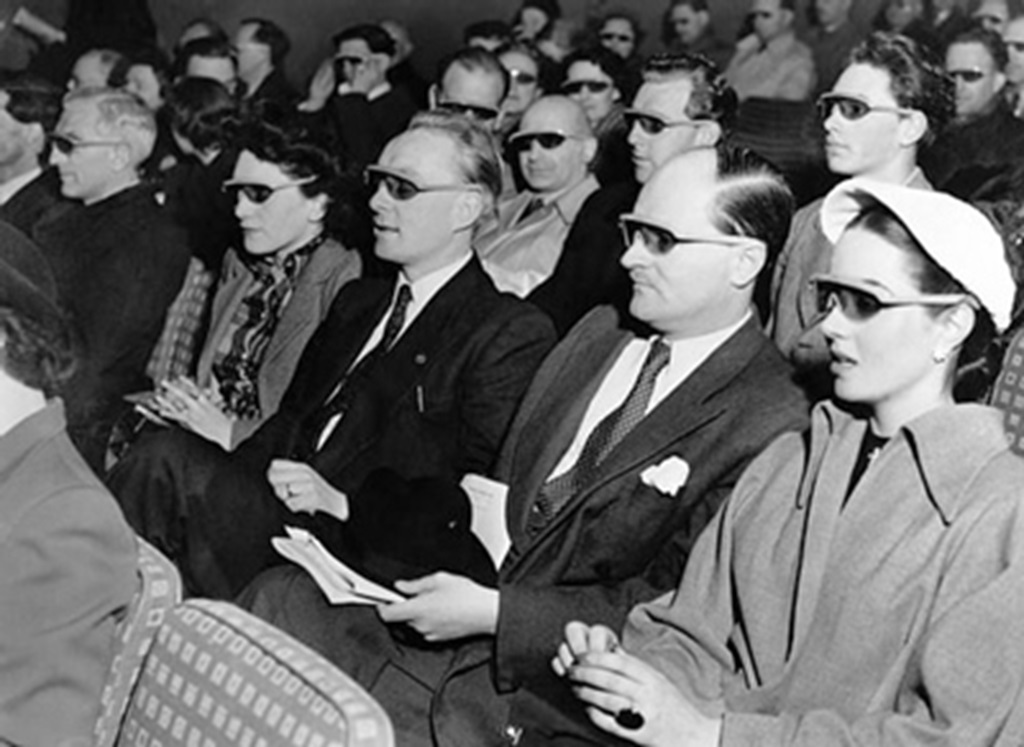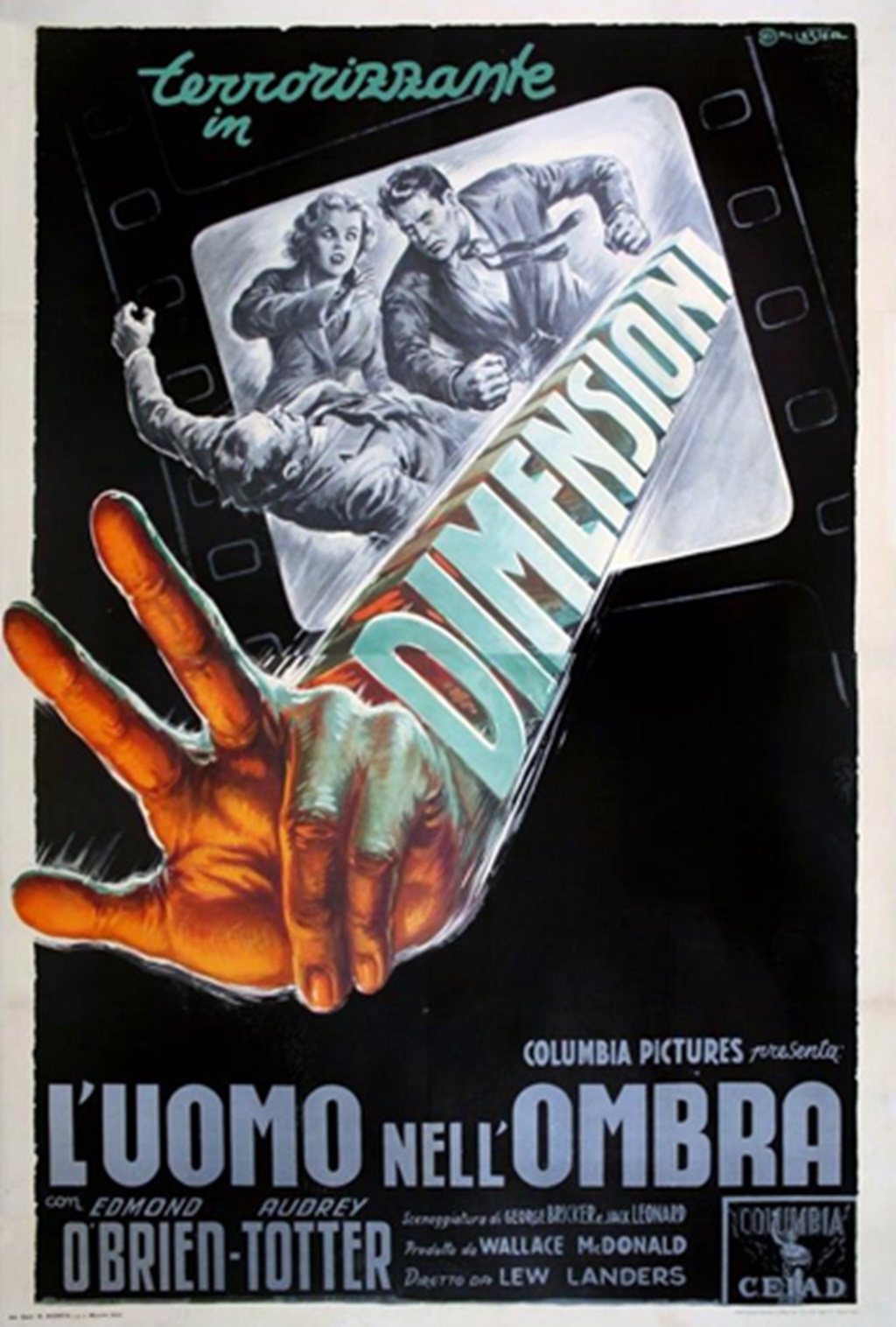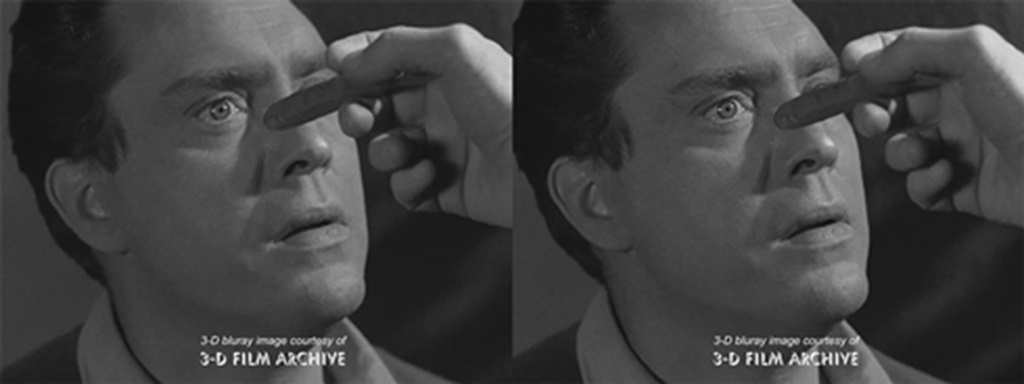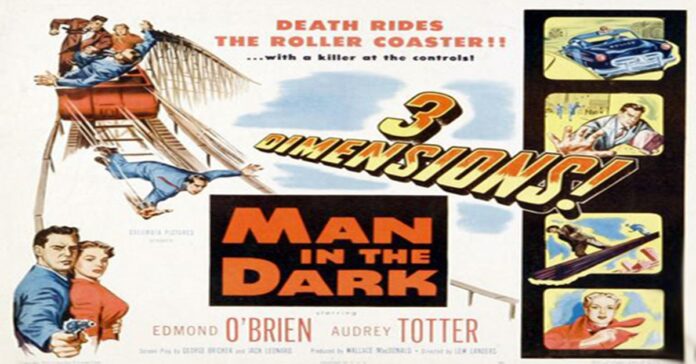Greg Kintz served as a Technical Director for the 3D Film Archive. Refer to the article to find the DVD Savant interview of him.
Twilight Time’s limited edition video label has recently released its first 3-D Blu-ray film. This film, Man in the Dark (1953), marks the first 3-D film released by a major studio at the beginning of the 3-Dimension craze that started with 1952’s Bwana Devil.
The movie is a fast-paced mystery noir where a criminal undergoes a brain operation to remove his criminal inclinations but experiences memory loss instead.
The story unfolds with the criminal becoming a target for his former gang members who are after stolen money.
Notable noir actors Audrey Totter and Ted de Corsia play essential roles in the film.
DVD Savant Interview: Greg Kintz
I inquired with Bob Furmanek, the President of the reputable 3D Film Archive, about their coverage of this 3-D Blu-ray release.
Greg Kintz, the Technical Director of the 3D Film Archive, offered to address my questions despite my limited expertise in 3-D technology. Greg then proceeded to answer my questions and posed some insightful inquiries.
Glenn Erickson: Hello, Greg.
The liner notes on Twilight Time’s 3-D disc of Man in the Dark emphasize that unlike House of Wax and Dial M for Murder, which took longer to shoot, Columbia’s 3-D film was shot quickly (in just eleven days) using a custom rig engineered in its camera department.
I’ve heard that 3-D at that time could be problematic and that some of these rigs were difficult to work with.
Were these cameramen talented, or was it more of luck, or did 3-D experts like yourself see some flaws in the film?
Greg Kintz: The camera operators were highly skilled. Most studios had camera departments, encouraging originality and a sense of pride in their work.
Original correspondences from 3-D shoots demonstrate their dedication to producing quality 3-D productions.
Unlike today’s digital 3-D gear, the 1950s 3-D was utterly analog, making it impossible to check stereoscopic alignment instantly.
This occasionally led to issues, with some misalignments making it to final release prints. Correcting these issues in post-production required time-consuming optical realignment.
Glenn: The roller coaster scenes have been heavily criticized for using a 2-D rear projection. What are your thoughts on this?
Greg: For years, using a 2-D rear projection in the roller coaster “POV” sequence has been a central point of contention.
While it is a short part of the movie, some feel it was a missed opportunity. However, despite this technique, many still appreciate the story and shooting style.
Given the limited 11-day shooting schedule, compromises had to be made, and it seems the POV roller coaster segment was one of them.

Also, see Movie-Watching Memories: The Quo Vadis
Glenn: I found the early trick 3-D shot in the brain operation scene to be well-executed, but some of the later shots where objects are extended toward the camera seem to have been captured with long lenses.
Do these scenes create an unusual 3-D effect?
Greg: Over the last century’s various revivals of 3-D movies, there have been different approaches to the intensity of off-screen effects and their impact on viewers, particularly in 3-D eyestrain.
Today’s movies are generally more conservative, while those from the 1980s were typically more aggressive.
The 1950s “Golden Age” 3-D titles struck a balance between these periods and, in my opinion, achieved the best combination.
However, a few brief shots in Man in the Dark may strain the eyes when viewed in 3-D without glasses, particularly in scenes with prominent off-screen effects.
As you mentioned, the opening brain operation and most of the other off-screen effects were well executed, making it one of the more aggressive 3-D movies of the 1950s in that respect.
Being Columbia’s first 3-D title, they were learning and likely felt obliged to provide a good share of off-screen effects.
Glenn: I believe the decade’s most “aggressive” Columbia 3-D picture must have been a Three Stooges short subject – everything was thrust towards the audience in 1953’s Spooks! Did you notice any specific issues with Sony’s 3-D Blu-ray of Man in the Dark?

Greg: In the age of 1080p/3-D, where most studio content is sourced from the best archival elements, it’s easy to have high expectations.
Sony did a commendable job restoring Man in the Dark, addressing vertical realignment and convergence issues.
However, they left some left/right size differential issues uncorrected, leading to alignment problems and eyestrain.
Despite this, the 3-D presentation is still a must-have for fans of noir and 3-D enthusiasts, although there is room for improvement.
It’s worth noting that Warner Bros. appreciated our critiques of the House of Wax 3-D Blu-ray, showing a great mindset toward ongoing improvement.
Glenn: Weren’t intermission cards common in most Golden Age 3-D movies due to the required reel change?
Greg: Yes, Man in the Dark had its intermission card for the mid-show reel change, which Sony chose not to include in this release.
It’s possible that the original card was not part of the sole element they used for restoration.
Glenn: I’ve noticed some 3-D movies have brief sections where the image appears flat, like 2-D. Why does this happen?
Greg: This can be due to various reasons. Some segments were initially shot in 2-D due to camera malfunctions.
At the same time, in other cases, the loss of original elements on one side led to brief, flat segments in the final 3-D release.
In the case of the Man in the Dark 3-D Blu-ray, I’ve observed both scenarios, with one 2-D shot lasting roughly 40 seconds, which I believe was originally in 3-D.
Checking older elements could provide more clarity on this if given the opportunity.

Glenn: Would the 3-D Film Archive recommend this title overall, and are you planning an in-depth review of this release?
Greg: We at the 3D Film Archive would have liked to do a full review of this title, but currently, we have our hands complete.
However, we plan to release three or more vintage 3-D Blu-ray titles in 2014. Regarding Man in the Dark, we highly recommend this title.
Despite its rushed production, the film has charm and plenty of dynamic 3-D moments.
The fact that this is only the fourth Golden Age title released in the 3-D Blu-ray format is a shame, and Twilight Time has done a great job with this release.
Glenn: It’s important to note that the Twilight Time disc is a collector’s pressing limited to 3,000 units.
Therefore, for 3-D enthusiasts interested in classic-era “Third Dimension” attractions, it’s advisable not to wait too long.
Thanks, Greg, for providing insights into the realities of 3-D filming in the low-budget Hollywood of the 1950s.
is available through Screen Archives Entertainment.
Interview date: January 20, 2014

